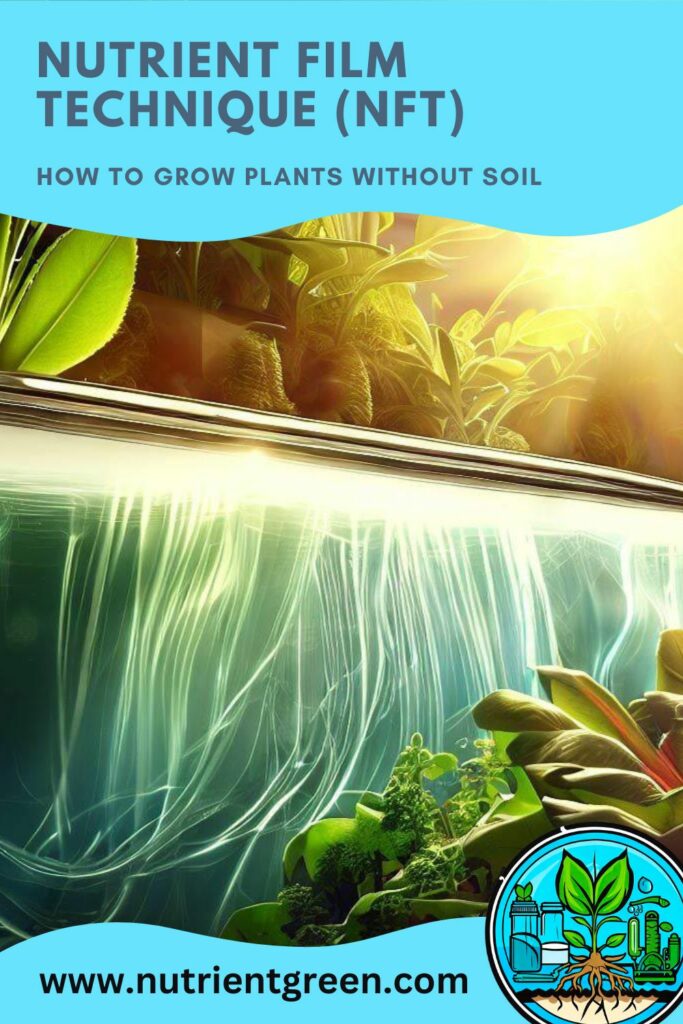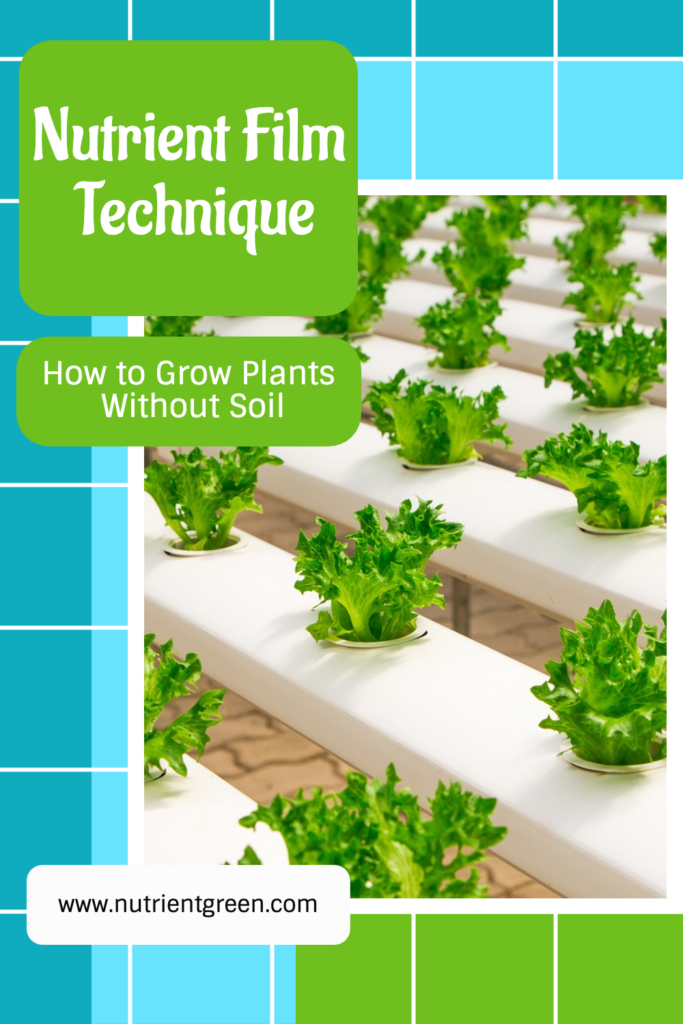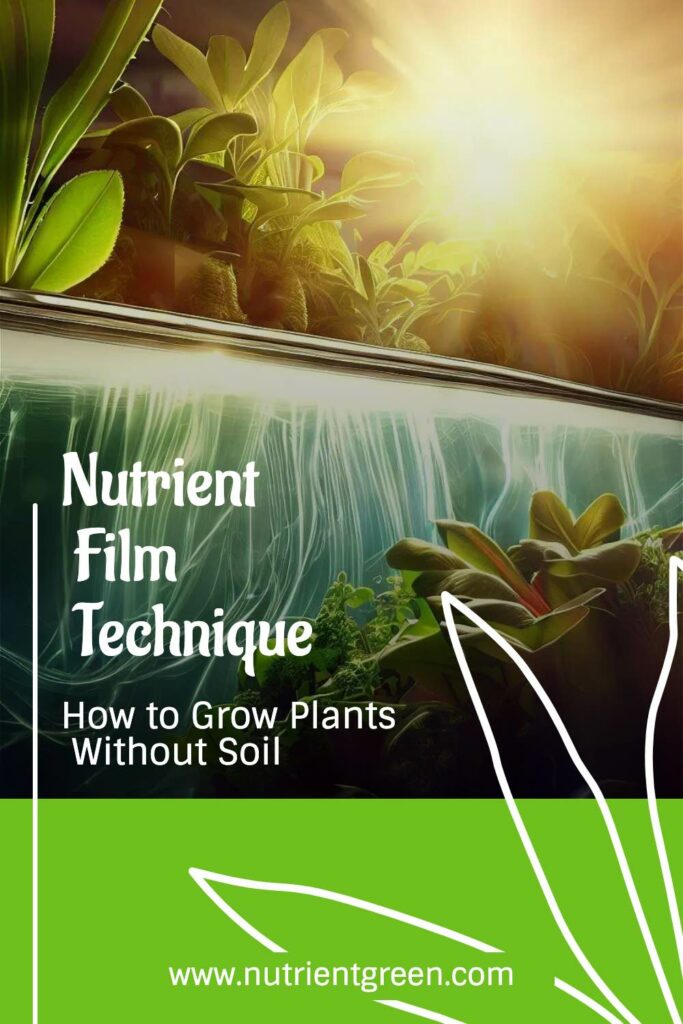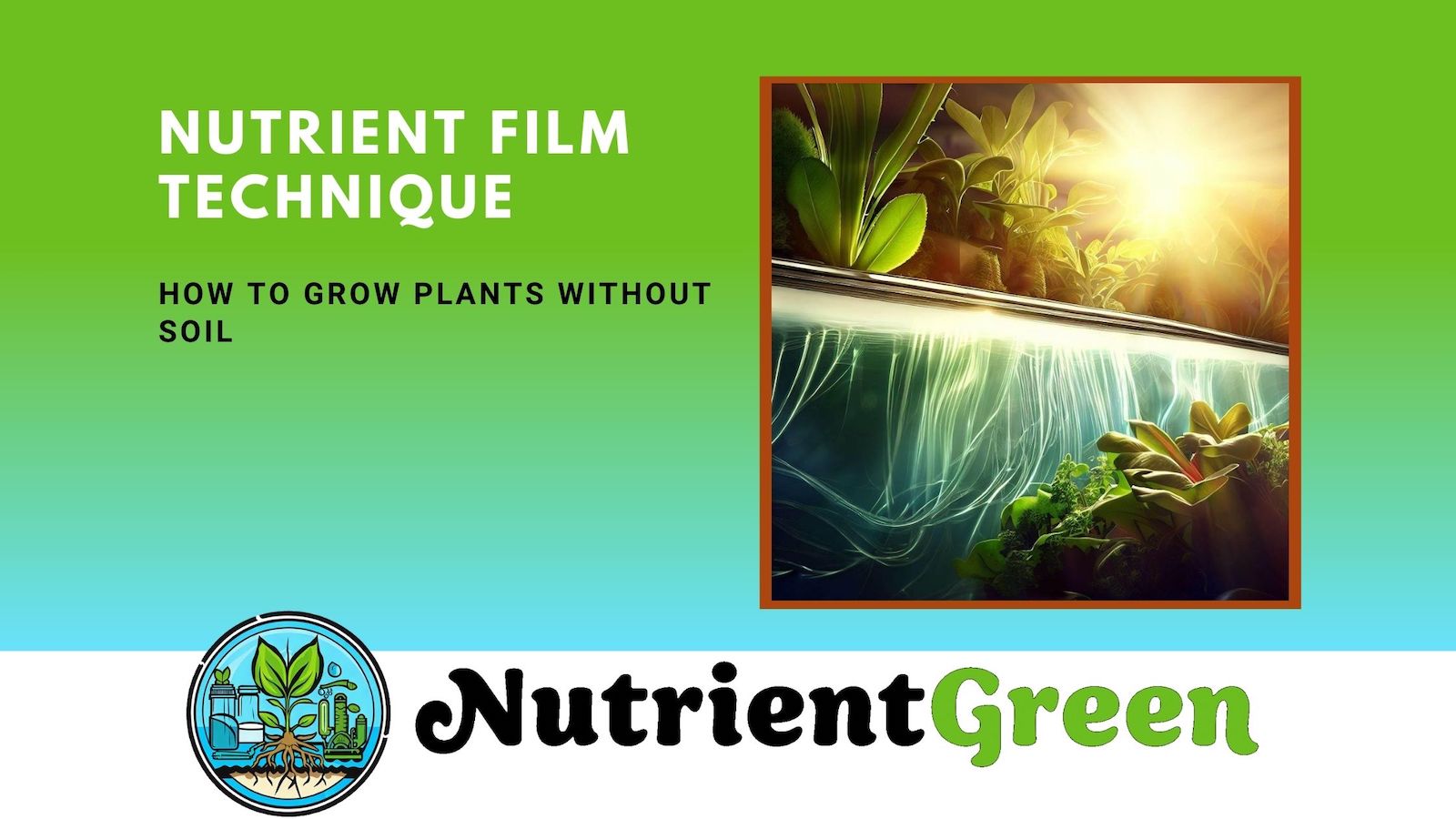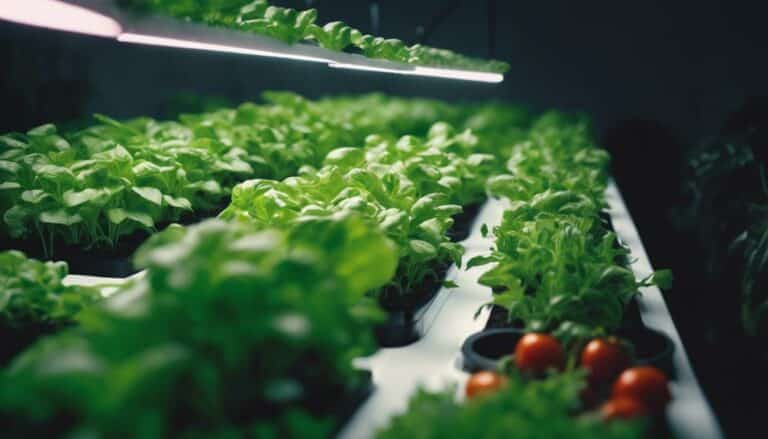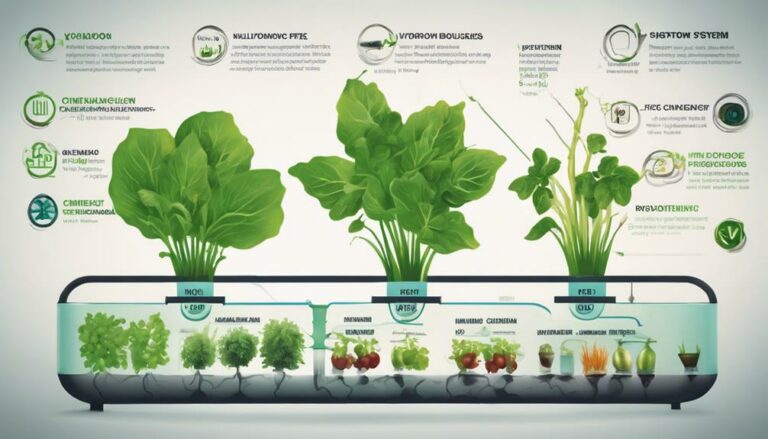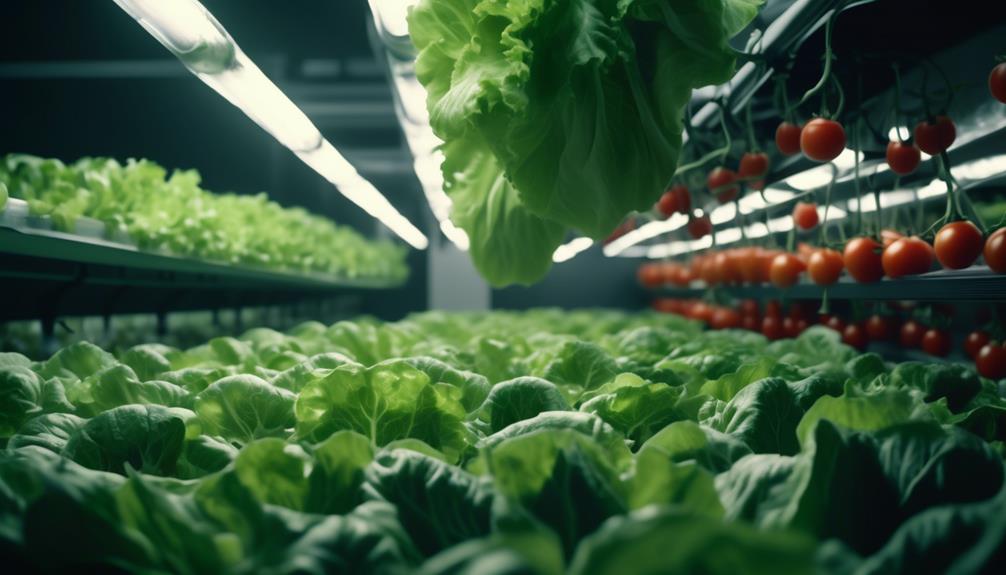If you have an interest in soilless plant cultivation, the Nutrient Film Technique (NFT) is worth considering. As a hydroponic method, NFT employs a thin film of nutrient-rich water to nurture plants in a soilless environment. Among the most favored and productive hydroponic methods, NFT can yield exceptional crops with high quality, even in limited spaces. Curious about how to utilize the Nutrient Film Technique effectively?
Table of Contents
This article will guide you through essential tips and tricks for optimal NFT utilization, delve into the reasons why NFT should be your choice, and equip you with troubleshooting know-how for seamless NFT implementation.
Nutrient Film Technique: An Introduction
Before delving into the intricacies of using nutrient film technique, let’s grasp the fundamentals of this hydroponic marvel and how it functions.
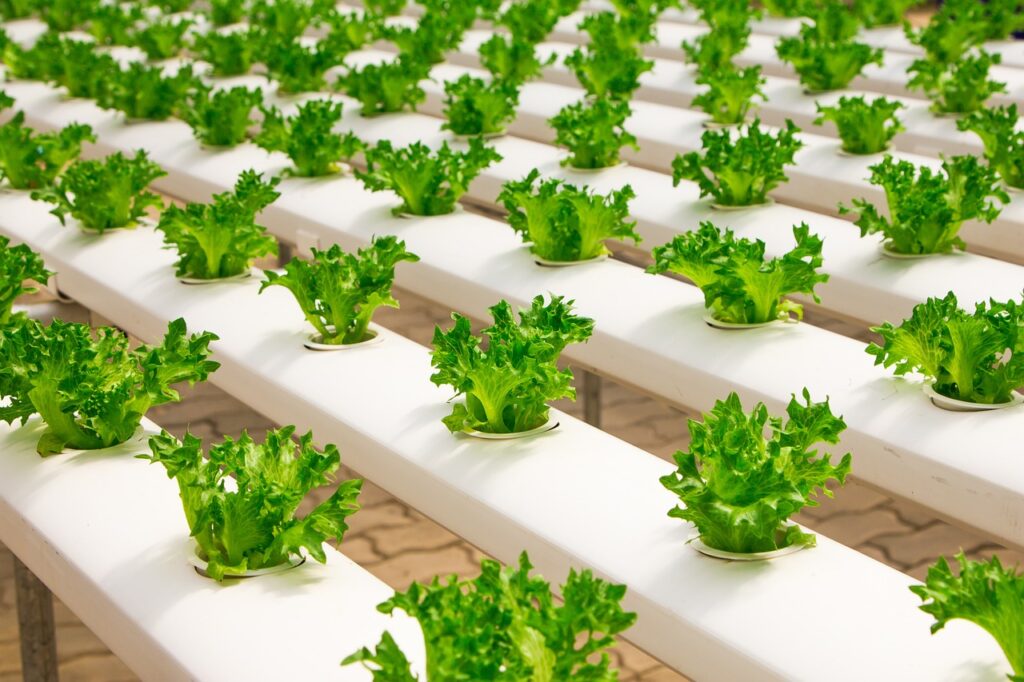
Definition
Nutrient film technique, a hydroponic method, fosters plant growth in a soilless environment through a thin film of water enriched with essential nutrients. Hydroponics involves cultivating plants without soil, using a liquid solution that delivers all the vital nutrients plants need, like nitrogen, phosphorus, and potassium. Water acts as the solvent, dissolving and transporting nutrients to the roots.
Key Components
Nutrient film technique encompasses several integral components, each contributing to a continuous flow of water and nutrients to nourish plant roots. These components include:
1. Reservoir: A sturdy container housing the water and nutrient solution, usually made of durable, leak-proof materials like plastic or metal. The reservoir should be sizeable enough to accommodate the entire system’s solution and equipped with a lid to prevent evaporation and contamination.
2. Pump: Responsible for transporting the water and nutrient solution from the reservoir to the tubing. The pump may be a submersible one placed inside the reservoir or an external variant connected through a hose. A powerful pump with a regulated timer or controller ensures sufficient pressure and flow rate.
3. Tubing: Flexible piping conveying the water and nutrient solution from the pump to the channels. Resilient materials like plastic or rubber are common choices to prevent clogging and corrosion. The tubing’s length should extend to all channels, featuring connectors or fittings to attach to the pump and channels.
4. Channels: These long, slender troughs support the plants and facilitate the flow of water and nutrient solution. Materials like plastic, metal, or lightweight substances form channels with a slight tilt to ensure a downward flow of the solution. Holes or net pots in the channels provide spaces to insert the plants.
5. Plants: The living entities thriving within the channels, absorbing water and nutrients from the solution. Suitable plants, such as lettuce, basil, and tomatoes, are ideal choices for hydroponic growth. Ensuring the plants are healthy, free from disease, and possess long enough roots to access the solution is essential for success.
The Process
Nutrient film technique operates seamlessly through the following steps:
1. Filling: The reservoir is filled with a well-mixed water and nutrient solution, adhering to the manufacturer or supplier’s guidelines. Parameters like pH, EC, and temperature are carefully checked.
2. Circulating: Activating the pump propels the water and nutrient solution through the tubing, gracefully streaming into the channels. A thin film envelops the plant roots, delivering oxygen, water, and nutrients, fostering their growth and prosperity.
3. Draining: Upon reaching the channel’s end, the solution gracefully drains back into the reservoir, creating a recycling loop. Periodic replenishment and replacement maintain the solution’s quality and quantity for the next cycle.

Why Use Nutrient Film Technique?
Now that we know what nutrient film technique is and how it works, let’s see why we should use nutrient film technique and what are the benefits of doing so.
Advantages
Opting for nutrient film technique offers numerous advantages over other plant cultivation methods, including:
1. Efficiency: NFT conserves water and nutrients by recycling and reusing the solution, outperforming soil-based and other hydroponic methods. Additionally, it maximizes space and energy utilization, accommodating more plants in smaller areas while demanding less lighting and heating.
2. Productivity: NFT surpasses soil-based and other hydroponic methods in yields and growth rate due to its optimal conditions for plant development. It ensures consistency and uniformity in crop production, eliminating soil-related variations and climate influences.
3. Quality: NFT yields superior and healthier crops by thwarting soil-borne diseases and pests. It delivers cleaner and fresher produce, reducing contamination risks from dirt, chemicals, and pathogens compared to soil-based and other hydroponic techniques.
Disadvantages
While nutrient film technique offers compelling advantages, it’s crucial to acknowledge and address its disadvantages, including:
1. Maintenance: NFT demands more frequent maintenance compared to soil-based or other hydroponic methods due to its numerous components and processes requiring regular monitoring and adjustments. Additionally, it necessitates a deeper understanding of technical and scientific aspects, making skill and knowledge vital for successful implementation.
2. Cost: Implementing NFT requires a higher initial investment than soil-based or other hydroponic methods due to the additional equipment and materials involved. Furthermore, operational expenses increase due to higher electricity and water consumption.
3. Risk: NFT carries more inherent risk compared to soil-based or other hydroponic methods, relying on an uninterrupted flow of water and nutrients. Factors such as power outages, pump failures, or tubing clogging can disrupt the system. Additionally, NFT poses potential issues, including algae growth, root rot, and nutrient deficiencies, which must be carefully managed to ensure optimal results.
Comparison
A third compelling reason to adopt nutrient film technique lies in its favorable comparison to other hydroponic methods concerning performance, suitability, and popularity. Let’s examine some examples of other hydroponic methods:
1. Deep Water Culture (DWC): DWC employs a deep reservoir where plants grow on a floating platform with holes or net pots. While simpler and more cost-effective than NFT, DWC consumes more water and nutrients, leading to lower yields and slower growth. It is also prone to root rot and oxygen deficiency.
2. Ebb and Flow: Ebb and flow utilizes a shallow tray with growing medium, periodically flooding and draining water and nutrient solution from a reservoir. More versatile than NFT, it requires more space and energy, resulting in less consistent and uniform crops. Moreover, power outages and pump failures pose potential risks.
Despite the competition, nutrient film technique stands out as a well-rounded hydroponic method, offering superior results and a broad appeal among growers.
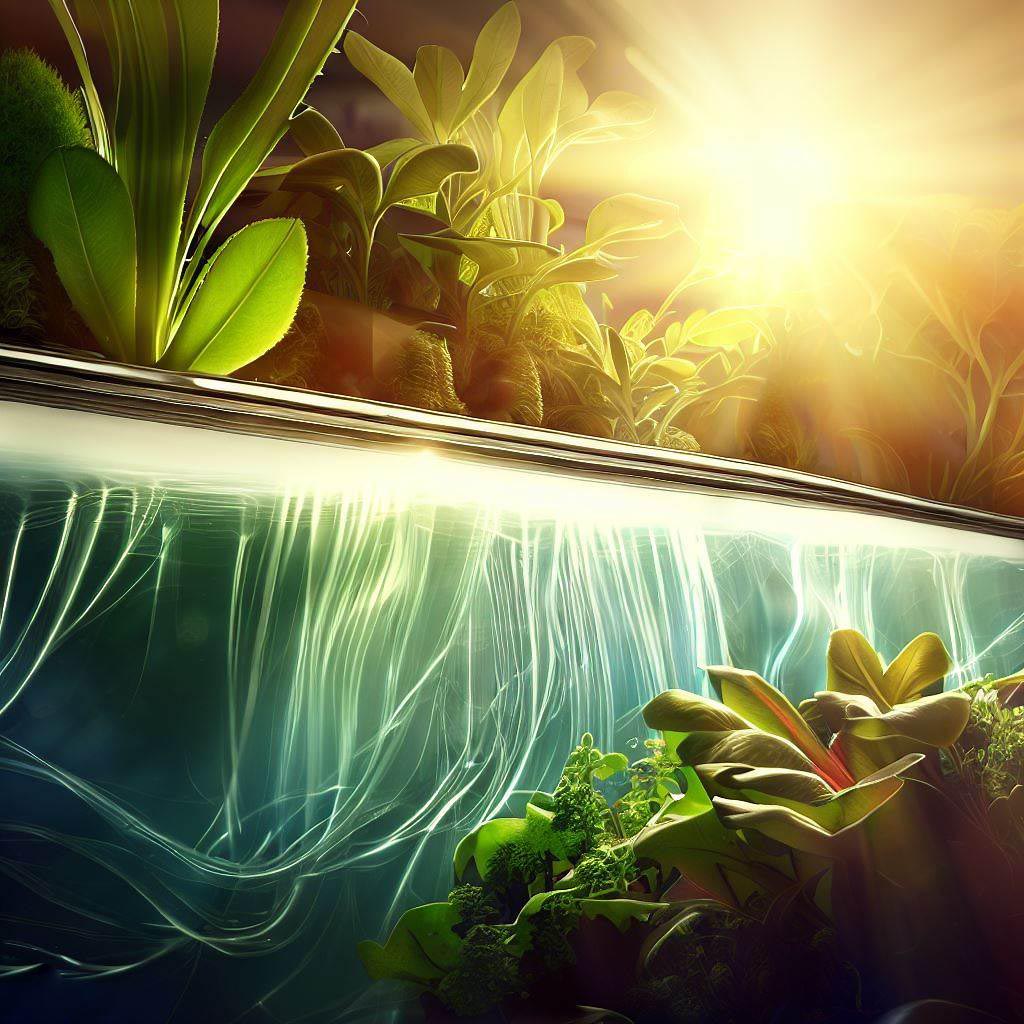
How to Use Nutrient Film Technique?
Now that we understand the reasons behind using nutrient film technique, along with its benefits and limitations, let’s explore how to implement this method and the steps involved.
Preparation
The initial step in utilizing nutrient film technique involves thorough preparation, encompassing crucial aspects like selecting the appropriate location, system, and plants.
Choosing the Right Location
When determining the location for your nutrient film technique system, consider the following factors:
1. Indoor or Outdoor: You have the flexibility to set up your NFT system either indoors or outdoors, depending on your preferences and circumstances. Indoor setups offer more control and protection against weather and pests, but they may necessitate additional lighting and ventilation. On the other hand, outdoor locations benefit from natural light and air, although they expose the system and plants to environmental factors and hazards.
2. Light or Shade: Evaluate your plants’ requirements and preferences to decide between a light or shaded location. Light locations facilitate increased photosynthesis and growth, but they may lead to higher water evaporation and temperatures. In contrast, shaded areas offer a cooler and moister environment, albeit at the expense of reduced photosynthesis and growth.
3. Level or Slope: Depending on your system’s design and functionality, you can opt for a level or sloped surface for your nutrient film technique. Level locations ensure stability and straightforward installation, but they may necessitate additional pumping and tubing. On the other hand, sloped surfaces offer the advantage of gravity-assisted flow rates, though they might require additional leveling and adjustments.
Choosing the Right System
The next critical step involves selecting the ideal type and size of nutrient film technique system, tailored to your location and plant requirements.
DIY or Commercial:
Consider whether to opt for a DIY or a commercial nutrient film technique system, keeping in mind your budget and expertise. DIY systems offer cost-effectiveness and customization options, but building and maintenance demand more time and effort. On the other hand, commercial systems entail higher costs but provide enhanced quality and reliability.
Small or Large:
Evaluate your available space and needs when deciding on a small or large nutrient film technique system. Small systems boast easier installation and operation, alongside cost-effectiveness, but they have limited capacity and flexibility. In contrast, large systems pose higher challenges and costs in installation and operation, but they offer greater capacity and flexibility.
Simple or Complex:
Determine whether a simple or complex nutrient film technique system suits your preferences and experience level. Simple systems involve fewer components and processes but offer limited control and automation. Meanwhile, complex systems offer more advanced features, increased control, and automation, but they come with a higher level of complexity.
Choosing the Right Plants
Selecting the appropriate type and variety of plants is crucial for your nutrient film technique system, taking into account its suitability and your location.
Hydroponic or Non-hydroponic:
Opt for hydroponic or non-hydroponic plants based on their adaptability and compatibility with your nutrient film technique system. Hydroponic plants, like lettuce, basil, and tomatoes, are specially bred or modified to thrive without soil. Non-hydroponic plants, such as strawberries, peppers, and cucumbers, can also grow in water and nutrients with slight adjustments, despite their usual soil-based growth.
Short or Tall:
Evaluate the size and shape of plants to determine whether short or tall varieties are better suited to your nutrient film technique system. Short plants like lettuce, spinach, and kale have low heights and compact shapes. On the other hand, tall plants like tomatoes, beans, and peas possess higher heights and sprawling structures.
Fast or Slow:
Consider the growth rate and cycle of plants to decide between fast or slow varieties for your nutrient film technique system. Fast plants such as lettuce, radish, and basil have a quick growth rate and shorter cycles. Slow plants like tomatoes, peppers, and melons, exhibit a slower growth rate and longer cycles.
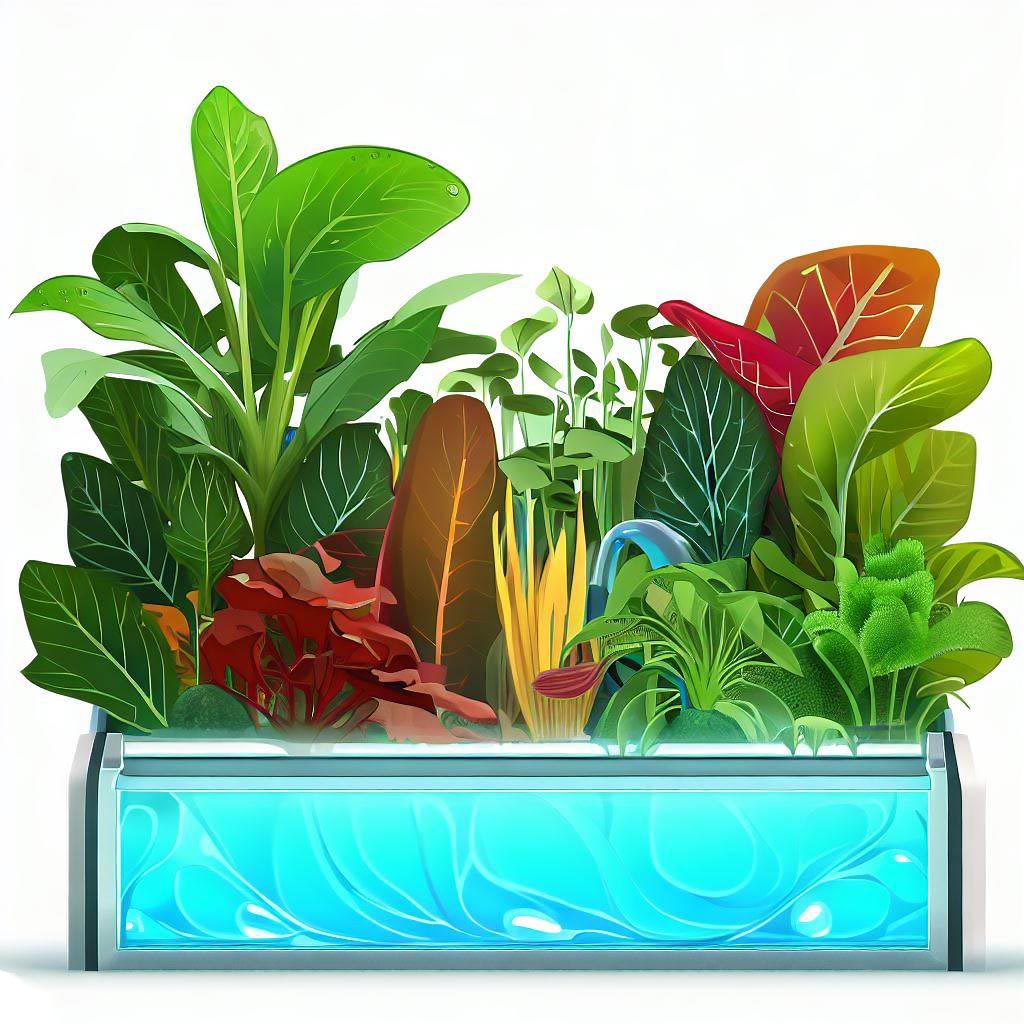
Installation
The next step involves the installation process, encompassing tasks like assembling components, tubing connections, and pump testing.
Assembling the Components
Carefully assemble the various parts of the nutrient film technique system in the following order:
1. Reservoir: Place the reservoir at the system’s lowest point and fill it with the water and nutrient solution. Ensure the reservoir has a lid to prevent evaporation and contamination.
2. Pump: Attach the pump to the reservoir using a hose or fitting, and plug it into a power source. A timer or controller should regulate the pump’s operation.
3. Tubing: Connect the tubing to the pump using a connector or fitting, securing it to the channels with clips or ties. The tubing’s length and diameter must be sufficient to reach all channels while maintaining the required pressure and flow rate.
4. Channels: Position the channels at the system’s highest point, securing them with brackets or stands. The channels should have a slight tilt to encourage a downward flow of the solution. They must also feature holes or net pots to accommodate the plants.
Connecting the Tubing
Proper and secure connection of the tubing is crucial to prevent leaks and clogs. Follow these steps to ensure effective tubing connections:
1. Connectors or Fittings: Use connectors or fittings to join different sections of tubing or connect the tubing to other components, such as the pump or channels. These devices come in various materials like plastic, metal, or rubber, with different shapes and sizes, such as elbows, tees, and couplings. Ensure that the connectors or fittings are compatible with the tubing and components, and tighten or clamp them securely to prevent leaks.
2. Clips or Ties: Utilize clips or ties to hold the tubing in place, preventing movement or sagging. These devices can be made of plastic, metal, or fabric and come in various forms like clips, clamps, and straps. Attach the clips or ties to the tubing and the support structure, adjusting or loosening them as needed to avoid kinks or bends in the tubing. Properly securing the tubing ensures smooth and efficient nutrient flow throughout the system.
Testing the Pump
The pump is a critical component responsible for the movement of water and nutrient solution in the nutrient film technique system. Before and after installation, it’s essential to test the pump to ensure its proper function and performance. Use the following methods to test the pump:
1. Timer or Controller: Employ a timer or controller to regulate the pump’s operation by setting specific on and off times and intervals. This device can be either manual or automatic, programmable or adjustable, depending on your preference and requirements. Connect the timer or controller to the pump and power source, and ensure it is calibrated or adjusted to suit your system and plants.
2. Pressure Gauge or Flow Meter: Implement a pressure gauge or flow meter to measure the pressure or flow rate of the water and nutrient solution in the tubing. This device may be digital or analog, displaying or indicating values in various units such as psi or gpm. Attach the pressure gauge or flow meter near the pump or channels and regularly check or monitor it to maintain optimal levels. By testing the pump and monitoring its performance, you can ensure the smooth and efficient functioning of your nutrient film technique system.
Maintenance
The third crucial step in utilizing nutrient film technique involves regular maintenance, encompassing tasks like monitoring water levels, pH, EC, and temperature.
Monitoring the Water Level
Regularly monitor and maintain the water level in the reservoir, as it plays a crucial role in the well-being of your plants. The water level can impact the following factors:
1. Concentration of Nutrients: Ensure the right concentration of nutrients in the water and nutrient solution to support the plants’ health and growth. Excessive nutrient concentration can lead to nutrient burn or toxicity, while insufficient levels can cause nutrient deficiency or starvation. Measure nutrient concentration using an EC meter or TDS meter, and keep it within the optimal range for your plants.
2. Availability of Oxygen: Maintain an appropriate level of oxygen in the water and nutrient solution to facilitate proper respiration and metabolism of plant roots. High oxygen levels can cause root damage or rot, while low levels may lead to root suffocation or drowning. Measure oxygen availability with a DO meter or ORP meter and ensure it remains within the optimal range for your plants.
Monitoring Methods
Monitor the water level using the following methods:
1. Water Level Indicator: Employ a water level indicator that shows the water level in the reservoir using a scale, gauge, float, or sensor. This device can be manual or automatic and can be read or signaled visually or audibly. Install the water level indicator in the reservoir for easy visibility and access from outside.
2. Water Level Controller: Utilize a water level controller that automatically or manually regulates the water level in the reservoir by adding or removing water and nutrient solution. This device can be simple or complex and can be operated or programmed based on your preferences and needs. Connect the water level controller to the reservoir and a water source, ensuring it is calibrated or adjusted to match your system and plants.
Monitoring the pH
Regular monitoring and maintenance of the pH in the water and nutrient solution are essential for the optimal growth of plants. The pH level can impact the following factors:
1. Solubility of Nutrients: Maintain the pH at an optimal level to ensure the proper solubility of nutrients in the water and nutrient solution. Correct nutrient solubility is crucial for the availability and uptake of nutrients by the plant roots. An inappropriate pH level can lead to nutrient leaching or precipitation, causing nutrient imbalances or deficiencies. To enhance nutrient solubility, consider using chelated or buffered nutrients that remain stable across different pH levels.
2. Activity of Microorganisms: Keep the pH at the right level to promote the growth and function of beneficial microorganisms while suppressing harmful ones in the water and nutrient solution. Proper activity of microorganisms plays a vital role in maintaining plant health and quality. Extreme pH levels can trigger root rot or disease, leading to nutrient imbalances or deficiencies. You can influence microorganism activity by introducing beneficial additives like enzymes, bacteria, and fungi, or using specific substances to control harmful microorganisms.
Monitoring Methods
Monitor the pH using the following methods:
1. pH Meter: Utilize a pH meter, equipped with a probe or strip, to measure the pH of the water and nutrient solution. This device can be digital or analog, displaying or indicating values in various units, such as pH or mV. Regularly calibrate or clean the pH meter, and insert it into the water and nutrient solution for accurate readings.
2. pH Controller: Employ a pH controller to automatically or manually regulate the pH of the water and nutrient solution by adding or removing acid or base. This device can be simple or complex, and it can be programmed or adjusted according to your preferences and requirements. Connect the pH controller to the reservoir and a pH source, and ensure it is calibrated or adjusted to suit your system and plants. By closely monitoring and controlling the pH, you can create an optimal environment for plant growth in your nutrient film technique system.
Monitoring the EC
Regularly monitor and maintain the electrical conductivity (EC) of the water and nutrient solution to ensure optimal plant health and growth. The EC level can impact the following factors:
1. Concentration of Nutrients: Maintain the appropriate concentration of nutrients in the water and nutrient solution to support plant health and growth. An excessively high nutrient concentration can lead to nutrient burn or toxicity, while a too low concentration can result in nutrient deficiency or starvation. Changes in nutrient concentration may occur due to factors like evaporation, uptake, or dilution of the water and nutrient solution. Measure nutrient concentration using an EC meter or TDS meter, and keep it within the optimal range for your plants.
2. Salinity of Water: Keep the salinity of water at the right level to ensure proper osmosis and transpiration of plant roots. Excessive salinity can cause salt stress or damage, while insufficient salinity can lead to water stress or damage. Changes in water salinity may occur due to evaporation, uptake, or dilution of the water and nutrient solution. Manage water salinity by using fresh or salt water, ensuring it remains within the optimal range for your plants.
Monitoring Methods
Monitor the EC using the following methods:
1. EC Meter: Utilize an EC meter, equipped with a probe or strip, to measure the EC of the water and nutrient solution. This device can be digital or analog, displaying or indicating values in various units such as µS/cm, mS/cm, ppm, etc. Regularly calibrate or clean the EC meter, and insert it into the water and nutrient solution for accurate readings.
2. EC Controller: Employ an EC controller to automatically or manually regulate the EC of the water and nutrient solution by adding or removing nutrients. This device can be simple or complex, and it can be programmed or adjusted according to your preferences and requirements. Connect the EC controller to the reservoir and a nutrient source, ensuring it is calibrated or adjusted to suit your system and plants. By closely monitoring and controlling the EC, you can maintain the ideal nutrient levels for successful nutrient film technique gardening.
Monitoring the Temperature
Regularly monitor and maintain the temperature of the water and nutrient solution to create an optimal environment for plant growth. The temperature can impact the following factors:
1. Solubility of Nutrients: Maintain the temperature at an appropriate level to ensure the proper solubility of nutrients in the water and nutrient solution. The solubility of nutrients affects the availability and uptake of nutrients by plant roots. High temperatures may cause nutrient leaching or precipitation, while low temperatures can lead to nutrient lockout or deficiency. Utilize chelated or buffered nutrients that remain stable at different temperatures to enhance nutrient solubility.
2. Availability of Oxygen: Keep the temperature within the optimal range to support the respiration and metabolism of plant roots. Too high temperatures can cause root damage or rot, while too low temperatures can lead to root suffocation or drowning. Monitor the availability of oxygen through temperature, agitation, or aeration of the water and nutrient solution. Use DO meters or ORP meters to measure oxygen levels and maintain them within the optimal range for your plants.
Monitoring Methods
Monitor the temperature using the following methods:
1. Thermometer: Use a thermometer, equipped with a sensor or strip, to measure the temperature of the water and nutrient solution. This device can be digital or analog, displaying values in various units such as °C or °F. Regularly calibrate or clean the thermometer, and insert it into the water and nutrient solution for accurate readings.
2. Heater or Cooler: Employ a heater or cooler to automatically or manually regulate the temperature of the water and nutrient solution by adding or removing heat. This device can be simple or complex and can be programmed or adjusted according to your preferences and requirements. Connect the heater or cooler to the reservoir and a power source, ensuring it is calibrated or adjusted to suit your system and plants. By closely monitoring and controlling the temperature, you can create an ideal environment for nutrient film technique gardening and promote healthy plant growth.
Troubleshooting Nutrient Film Technique
Troubleshooting nutrient film technique involves identifying problems, finding solutions, and implementing preventive measures. Address the following common issues to ensure the system’s optimal function and performance:
1. Clogging:
- Problem: Blockage or obstruction in the tubing or channels due to debris, sediment, roots, or algae.
- Solution: Regularly inspect and clean the tubing and channels to remove any obstructions. Consider using filters or screens to prevent debris from entering the system. Properly space and support the plants to avoid root entanglement.
2. Leaking:
- Problem: Loss of water and nutrient solution from cracks, holes, or gaps in the tubing or channels.
- Solution: Check for any visible leaks and repair them promptly using suitable sealants or replacements. Ensure a proper and secure connection between tubing and fittings to prevent leaks.
3. Algae Growth:
- Problem: Excessive algae accumulation in the water and nutrient solution, affecting water quality and system function.
- Solution: Reduce light exposure to the nutrient solution by covering the reservoir or channels. Consider using opaque materials or light-blocking covers. Use algae inhibitors or ultraviolet (UV) sterilizers to control algae growth.
4. Root Rot:
- Problem: Decay or infection of plant roots due to excess moisture, low oxygen, high temperature, or pathogens.
- Solution: Ensure adequate drainage and aeration to prevent waterlogged conditions. Avoid overwatering the plants. Implement proper spacing and avoid overcrowding to promote airflow around the roots. Use sterilized growing media to reduce pathogenic risk.
Preventing Recurrence
Prevent the reoccurrence of issues by implementing these preventive measures:
- Regular Maintenance: Conduct routine inspections and cleaning of the system to prevent debris buildup and ensure proper functioning.
- Water Quality: Use high-quality water and nutrient solutions free from contaminants to avoid potential problems.
- System Design: Design the system with efficiency and functionality in mind, ensuring proper slope and alignment to facilitate nutrient flow.
- Temperature Control: Maintain the optimal temperature range to discourage the growth of harmful microorganisms and reduce stress on the plants.
- Monitoring: Regularly monitor pH, EC, and other vital parameters to detect any imbalances and take corrective actions promptly.
By troubleshooting and addressing potential problems promptly, you can maintain a healthy and thriving nutrient film technique system, promoting successful hydroponic gardening and yielding bountiful, quality crops.
Finding the Solutions
To address issues with nutrient film technique, apply suitable solutions to resolve or minimize the problems:
1. Cleaning:
- Solution: Regularly clean the tubing and channels to remove debris, sediment, and algae. Use water, air, brushes, or mild cleaning agents to ensure proper nutrient flow and prevent clogging.
2. Repairing:
- Solution: Promptly fix any cracks, holes, or gaps in the tubing or channels using appropriate sealants, tapes, or adhesives. Ensure a secure and leak-free system.
3. Replacing:
- Solution: Replace damaged or worn-out components, such as tubing, channels, or pumps, with new or spare parts. Prevent equipment failure and maintain the system’s efficiency.
4. Adjusting:
- Solution: Regularly monitor and adjust water level, pH, EC, and temperature using controllers, meters, heaters, or coolers. Provide optimal conditions for plant growth and prevent root rot or environmental stress.
By applying these solutions, you can overcome challenges and ensure that your nutrient film technique system operates smoothly, allowing for healthy plant growth and bountiful harvests. Regular maintenance and attentive monitoring are key to maximizing the system’s potential and optimizing hydroponic gardening results.
Preventing the Recurrence
To ensure the problems with nutrient film technique do not recur, adopt effective preventive measures and best practices:
1. Using Filters:
- Practice: Incorporate filters to trap debris, sediment, roots, and algae from entering or leaving the system.
- Benefit: Filters prevent clogging, improve nutrient flow, and maintain water clarity, reducing the risk of recurring issues.
2. Using Sterilizers:
- Practice: Employ sterilizers to eliminate harmful pathogens like bacteria, fungi, and viruses from the water and nutrient solution.
- Benefit: Sterilizers prevent root rot and diseases, safeguarding plant health and promoting a disease-free environment.
3. Using Air Stones:
- Practice: Integrate air stones to enhance oxygen levels in the water and nutrient solution through aeration.
- Benefit: Air stones prevent oxygen depletion, mitigating the possibility of root rot and enhancing overall root health and growth.
By implementing these preventive measures, you establish a resilient and reliable nutrient film technique system, maintaining a healthy and thriving hydroponic garden without encountering recurrent challenges. Regularly assess and maintain the system to ensure long-term success and maximum crop yield.
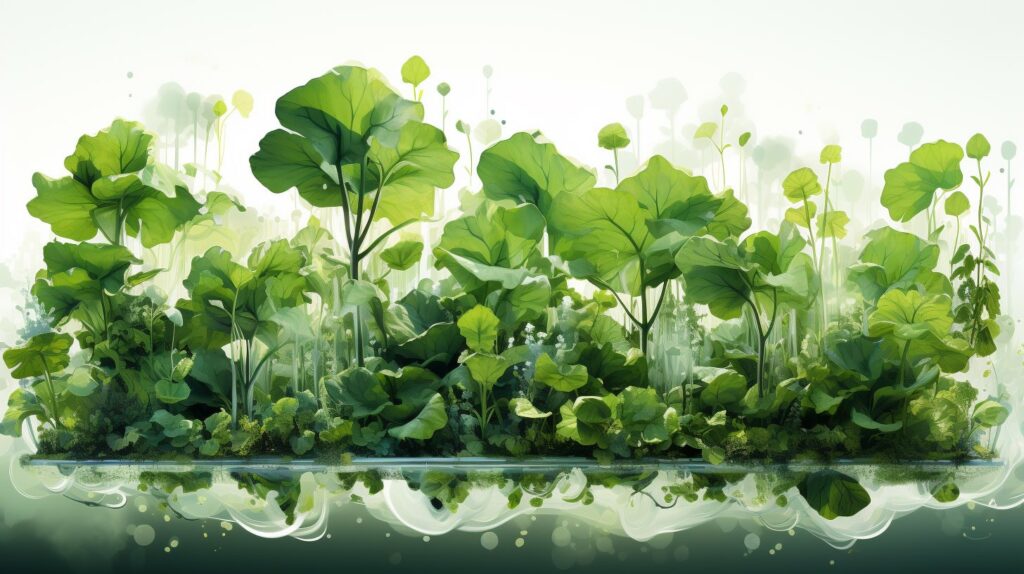
Conclusion
To use nutrient film technique successfully, proper preparation, installation, monitoring, and troubleshooting are crucial. Choosing the right location, system, and plants is vital to ensure optimal growth conditions. Regular monitoring of water level, pH, EC, and temperature helps maintain nutrient balance and prevent issues. Troubleshooting and finding effective solutions promptly address any problems that may arise.
With its advantages in efficiency, productivity, and crop quality, nutrient film technique stands as a compelling choice for soilless plant cultivation. By adhering to best practices and preventive measures, growers can harness its full potential and enjoy a bountiful and sustainable hydroponic garden. Embrace the nutrient film technique and unlock the path to successful and rewarding soilless cultivation.
Happy growing!
FAQ (Frequently Asked Questions)
Is nutrient film technique suitable for beginners in hydroponic gardening?
Yes, nutrient film technique can be beginner-friendly, but some knowledge of hydroponics is beneficial. Start with a small system and research proper setup and maintenance.
What types of plants thrive best in nutrient film technique?
Nutrient film technique works well for leafy greens like lettuce, herbs such as basil, and vining crops like tomatoes or cucumbers.
Can I reuse the nutrient solution in my NFT system?
Yes, you can reuse the nutrient solution. However, it’s essential to refresh and adjust the solution regularly to ensure it remains balanced and beneficial for your plants.
Can nutrient film technique be used for commercial farming or large-scale production?
Yes, nutrient film technique can be scaled up for commercial farming, but it requires careful planning, automation, and proper nutrient management.
What are the advantages of nutrient film technique over traditional soil-based farming?
Nutrient film technique offers higher crop yields, water efficiency, reduced space requirements, and eliminates soil-borne pests and diseases.
Can I automate the NFT system?
Yes, you can automate various aspects of the NFT system, such as nutrient delivery and water flow, using timers and sensors. Automation can save time and effort, providing a consistent environment for your plants.
